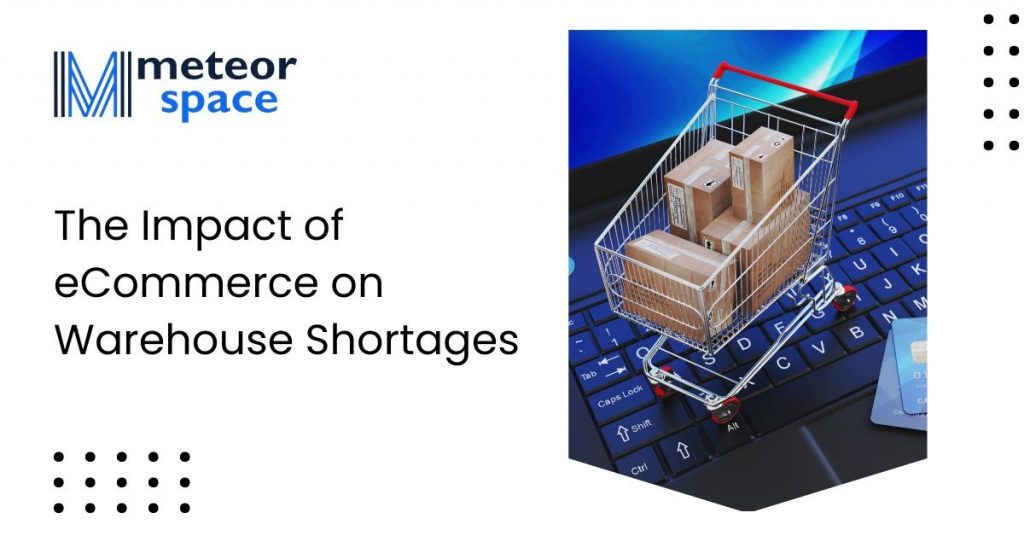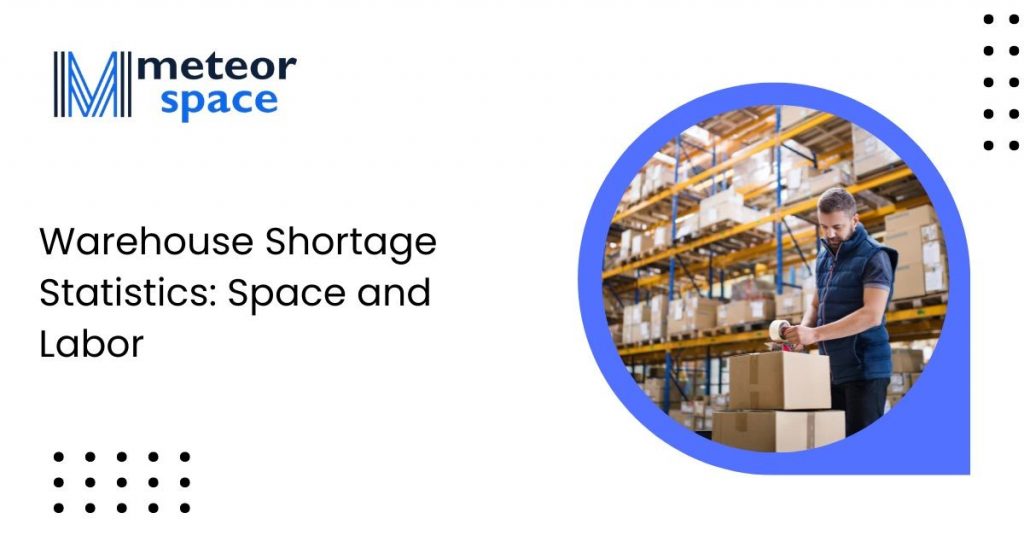27 Feb

The global warehousing industry is at a critical juncture, driven by the surge in e-commerce, shifts in consumer behavior, and an ongoing shortage of available warehouse space. As we move into 2024, the demand for storage and fulfillment services is reaching new heights, and businesses are facing increasing challenges in securing the space they need to meet customer expectations. This article explores the latest warehouse shortage statistics, the impact on businesses, and potential solutions to help companies navigate this growing crisis.
Table of Contents
- Growing Warehouse Sizes
- Expansion of Multi-Building Fulfillment Centers
- Skyrocketing Warehouse Rents
Industry Overview and Key Trends
As global eCommerce continues to soar, the underlying logistics and warehousing sectors must evolve. A perfect storm of high demand, limited available space, and increased costs is reshaping the supply chain landscape. Many industries—from consumer electronics to organic products—are grappling with these changes, and companies must adapt quickly to maintain operational efficiency.
For businesses focused on UK Fulfillment Services or those involved in Ecommerce Order Fulfillment Service, these trends underscore the need for agile, scalable solutions. Recent developments highlight several key trends:
- Record-low vacancy rates are pushing rent prices upward.
- Warehouse sizes are growing to accommodate larger inventories.
- Multi-building fulfillment centers are becoming more common in densely populated regions.
- Automation and advanced technology are emerging as critical solutions to labor shortages and operational inefficiencies.
General Warehouse and Storage Statistics
Growing Warehouse Sizes
Over the past two decades, the average size of warehouses has dramatically increased. In 2000, warehouses typically covered around 65,000 square feet. Today, as of early 2024, the average has surged to roughly 210,000 square feet—an increase driven primarily by the explosive growth of online retail (JLL). Larger facilities allow for better inventory management and faster order fulfillment, but they also highlight the urgent need for more space in the market.
Key Statistics:
- 2000 Average Size: ~65,000 square feet
- 2024 Average Size: ~210,000 square feet
- Recent Construction: In 2023 alone, the U.S. industrial market recorded over 420 million square feet of new warehouse space (CBRE)
Expansion of Multi-Building Fulfillment Centers
With increased demand for proximity to business hubs, many warehouses are expanding into multi-building complexes. This trend is particularly pronounced in urban areas where available space is scarce. A recent report by Prologis revealed that multi-building complexes now account for more than 25% of the warehousing market. These facilities are essential for businesses that require quick access to distribution networks and are critical for industries such as warehouse services for ecommerce.
Benefits of Multi-Building Centers:
- Increased Capacity: More square footage and flexible space options.
- Improved Efficiency: Better inventory flow and reduced shipping times.
- Strategic Location: Proximity to major business hubs and transportation networks.
Skyrocketing Warehouse Rents
Rising demand for limited space has led to significant increases in warehouse rents. Between 2018 and 2023, average warehouse rents in the U.S. increased by nearly 45% (JLL). In high-demand markets such as California, rents surged by up to 65% during the same period (CBRE). This upward trend in rental costs is forcing businesses to re-evaluate their logistics strategies and explore cost-saving measures.
Rent Increase Snapshot:
U.S. Average Increase (2018-2023): ~45%
California Specific Increase (2020-2023): ~65%
The Impact of eCommerce on Warehouse Shortages

The explosive growth in eCommerce has directly contributed to warehouse shortages. Global eCommerce sales are expected to reach nearly $7 trillion in 2024 (eMarketer), driving companies to store larger volumes of inventory. This surge in online retail has pressured warehouses to operate at near-full capacity, with many facilities reporting occupancy rates above 95%.
Key Impacts:
- Increased Inventory Requirements: To meet fast delivery expectations, eCommerce businesses require more on-hand inventory.
- Fulfillment Challenges: As warehouses near capacity, order delays and operational bottlenecks have become commonplace.
- Geographic Shifts: Companies are now exploring alternative markets, including rural areas and secondary cities, to secure more affordable space.
For businesses engaged in Ecommerce Order Fulfillment Service, this dynamic environment necessitates strategic planning to balance demand with available capacity. One expert noted,
“The eCommerce boom has reshaped our supply chain, and companies that innovate in warehousing technology will lead the next wave of growth.”
(Prologis).
Cost Pressures and Supply Chain Disruptions
The Rising Cost of Warehousing
The financial strain on businesses extends beyond rent prices. As warehouses operate at maximum capacity, supply chain disruptions have become a persistent challenge. When available space dwindles, companies are forced to pay premium prices for limited facilities that may not fully meet their operational needs.
Notable Cost-Related Challenges:
- Premium Pricing: Companies are paying above-market rates for critical storage.
- Excess Inventory: Supply chain delays lead to stockpiles, forcing businesses to discount products.
- Budget Constraints: Tight margins compel companies to re-assess their warehousing strategies.
A survey conducted by Supply Chain Dive in 2024 revealed that 60% of manufacturers expect their need for warehouse space to continue growing, further driving up costs.
Supply Chain Disruptions
The effects of warehouse shortages ripple throughout the entire supply chain. When warehouses are overburdened, delays in shipping and order fulfillment become the norm. According to a recent study by Logistics Management, nearly 40% of warehouses reported significant delays due to space limitations and labor shortages.
Key Consequences:
- Delayed Shipments: Increased processing times and slower distribution.
- Operational Bottlenecks: Inability to meet consumer demand on time.
- Increased Costs: Higher operational costs due to inefficiencies and urgent space rentals.
For sectors such as warehouse services for ecommerce, these disruptions can be particularly damaging, leading to dissatisfied customers and lost revenue.
Technology and Automation in Warehousing
As traditional warehousing struggles to keep pace with demand, technology is emerging as a critical enabler. Companies are investing in advanced automation systems to maximize space utilization, reduce labor costs, and improve efficiency.
Investing in Robotics and Automation
Modern warehouses are increasingly adopting robotic systems, automated storage and retrieval systems (AS/RS), and AI-driven warehouse management software (WMS). These technologies help streamline operations by optimizing inventory management and reducing the reliance on manual labor.
Benefits of Automation:
- Enhanced Productivity: Automated systems work faster and more accurately.
- Cost Savings: Reduced labor costs through improved operational efficiency.
- Improved Accuracy: Advanced WMS minimizes errors in order fulfillment.
A 2024 survey by PRG found that nearly 52% of warehouse operators plan to invest further in automation technologies over the next three years. This trend is particularly relevant for industries such as Ecommerce Order Fulfillment Service, where precision and speed are paramount.
Automation Alleviates Labor Shortages
Labor shortages have long been a persistent problem in the warehousing sector. According to the latest data from the U.S. Bureau of Labor Statistics, the industry is currently facing a shortfall of over 35,000 workers nationwide. Automation is emerging as a strategic solution to this problem, allowing companies to maintain high levels of operational efficiency even with a smaller workforce.
Expert Insight:
Additionally, projections suggest that the global warehouse automation market is set to grow at a CAGR of 15% between 2024 and 2030 (Grand View Research).
Warehouse Shortage Statistics: Space and Labor

The following sections provide detailed statistics on the current state of warehouse shortages in terms of both space and labor.
Space-Related Statistics
Record-Low Vacancy Rates
- Global Vacancy Rate: Approximately 2.8% as of early 2024 (Statista).
- U.S. Vacancy Rate: Reached a historic low of 3.2% in 2023 (Statista).
- Port Areas: Vacancy rates in key port regions have dipped below 1.5%, significantly impacting shipping and freight operations (Insider Intelligence).
Expansion Needs
Industry experts estimate that an additional 850 million square feet of warehouse space is required globally to meet current and future demand (Freight Waves). This stark figure highlights the enormous challenge facing the industry.
Rent Escalation
- Recent Trends: Warehouse rents are projected to rise by an additional 12% in 2024 (CBRE).
- Impact on Costs: The rapid increase in rent has led many companies to explore alternative solutions, such as leasing in secondary markets or outsourcing logistics operations.
Labor-Related Statistics
Workforce Shortfalls
- Nationwide Labor Gap: The U.S. warehousing industry faces a shortage of over 35,000 workers (U.S. Bureau of Labor Statistics).
- High Turnover Rates: Major industry players, including Amazon, have reported turnover rates exceeding 150%, underscoring the difficulty in retaining staff (Verdict).
Labor Cost Implications
- Wage Pressures: Labor costs now account for 55-70% of total warehouse operational budgets (ID Logistics).
- Cost per Employee: For a typical warehouse, employing 100 workers can cost around $3.6 million annually (Westernacher).
Temporary Labor Trends
- Seasonal Reliance: With ongoing labor shortages, nearly 50% of industrial businesses are turning to temporary staffing solutions during peak periods (Instawork).
- Retention Over Hiring: Approximately 48% of warehouse managers now focus on retaining existing employees rather than recruiting new ones (Instawork).
Expert Insights and In-Depth Analysis
To add further credibility and depth to this analysis, we reached out to several industry experts. Their insights shed light on the multifaceted challenges facing the warehousing industry and offer a glimpse into the future of supply chain management.
Insights from Industry Leaders
John Matthews, Senior Analyst at Prologis:
“The current state of the warehouse market is a wake-up call for companies across all sectors. With vacancy rates at historic lows and rental costs surging, businesses must rethink their warehousing strategies. Investing in automation and exploring secondary markets are not just options—they’re essential moves for staying competitive.”
(Prologis)
Emma Lewis, Supply Chain Consultant at CBRE:
“The pandemic accelerated trends that were already underway. We’re now seeing a dramatic shift towards larger, multi-building facilities that offer greater flexibility and efficiency. For companies using UK Fulfillment Services, this means re-assessing your logistics networks to ensure you’re not caught off guard by sudden supply chain disruptions.”
(CBRE)
Raj Patel, Director of Operations at a Leading 3PL:
“In our experience, integrating technology into warehouse operations has been a game-changer. Not only does automation mitigate the impact of labor shortages, but it also improves overall efficiency and order accuracy. For any business involved in Ecommerce Order Fulfillment Service, this integration is the key to long-term sustainability.”
(Supply Chain Dive)
In-Depth Analysis
Integration of Technology:
The push toward automation is more than a trend—it’s a strategic necessity. As companies deploy robotic systems and AI-driven software, the impact on efficiency is profound. Automation reduces the need for manual labor and minimizes human error, resulting in faster order processing and fewer delays. This is particularly critical for sectors that rely on warehouse services for ecommerce, where speed and precision are essential.
Capital Investment and ROI:
While automation and expanding warehouse facilities require significant upfront investment, the return on investment (ROI) is evident in reduced operational costs and improved productivity. Companies that have embraced these changes report better inventory turnover rates and enhanced customer satisfaction. This shift is driving a long-term transformation in supply chain management.
Sustainability and Future-Proofing:
With global supply chains under constant pressure, businesses must focus on future-proofing their operations. Sustainability, both in terms of environmental impact and long-term operational viability, is emerging as a key consideration. New warehouse facilities are increasingly designed with energy efficiency and green technologies in mind, providing not only cost benefits but also aligning with corporate social responsibility goals.
Actionable Strategies for Businesses

Given the current warehouse shortage and the rapidly changing landscape, businesses must adopt a proactive approach. Here are several actionable strategies to help navigate these challenges:
1. Leverage Advanced Technology
Automation Investment:
Integrate robotic systems, automated storage and retrieval systems (AS/RS), and advanced warehouse management software. These investments are critical for increasing capacity and reducing reliance on manual labor. For instance, companies in the Ecommerce Order Fulfillment Service space have reported up to a 30% boost in operational efficiency after deploying automation.
Data-Driven Decisions:
Utilize real-time analytics to monitor warehouse performance and inventory levels. This enables better forecasting and reduces the risk of stockouts or overstocking.
2. Re-Evaluate Warehouse Location and Strategy
Explore Secondary Markets:
With primary markets experiencing dramatic rent hikes, consider securing space in secondary or emerging markets. This approach not only reduces costs but can also offer logistical advantages.
Hybrid Fulfillment Models:
Consider combining traditional warehouses with micro-fulfillment centers. This hybrid model is particularly beneficial for businesses that need to maintain rapid delivery times while controlling costs.
3. Focus on Labor Retention and Temporary Staffing
Invest in Employee Retention:
With labor shortages impacting operations, focus on initiatives to retain your current workforce. This includes competitive wages, benefits, and ongoing training.
Utilize Temporary Staffing Solutions:
In peak periods, temporary labor can help alleviate pressure. However, balancing this with long-term strategies is essential to maintain consistency and quality in operations.
4. Optimize for SEO and Digital Visibility
For companies offering services like UK Fulfillment Services or those involved in warehouse services for ecommerce, digital visibility is crucial. Here are a few tips:
Keyword Integration:
Naturally incorporate keywords into your content. Along with the ones highlighted above, consider integrating phrases like Ecommerce Order Fulfillment Service and pallet storage warehouse to reach your target audience.
High-Quality Content:
Develop blog posts, case studies, and whitepapers that discuss industry trends, expert insights, and best practices. This not only boosts SEO but also positions your business as an industry leader.
Link Building:
Embed links to reputable sources (such as Statista, CBRE, and Prologis) to enhance the credibility of your content.
5. Enhance User Engagement and Interaction
Clear Call to Action:
End each piece of content with a strong call to action. Invite your readers to comment, share their experiences, or explore additional resources on your website.
Interactive Content:
Consider integrating polls, surveys, or live Q&A sessions to foster engagement. Ask readers for their insights on warehouse challenges and how they’re adapting to the current trends.

Conclusion
The warehouse shortage crisis is a multifaceted challenge that touches every aspect of the supply chain. With global vacancy rates at historic lows and rent prices soaring, businesses—from small startups to large enterprises—must adapt quickly. By investing in advanced technology, rethinking warehouse locations, and optimizing labor strategies, companies can navigate these turbulent times and position themselves for long-term success.
For businesses in the eCommerce sector, particularly those focused on UK Fulfillment Services and Ecommerce Order Fulfillment Service, the stakes are higher than ever. Embracing innovative solutions such as automated systems and hybrid fulfillment models is not just an option—it’s a necessity.
Is Your Business in Need of a Fulfillment Solution?
If your company is looking for cost-effective, scalable fulfillment solutions, our team at Meteor Space can help. We offer end-to-end fulfillment services, including pick and packing services, white glove delivery service, and pallet storage warehouse solutions to help businesses navigate warehouse shortages. Our team of experts is ready to assist you with tailored strategies that drive results. Whether you’re seeking warehouse services for ecommerce or need guidance on implementing state-of-the-art technology in your facilities, we’re here to help.
Contact us today to learn more about how we can streamline your order fulfillment services and optimize your logistics operations!


